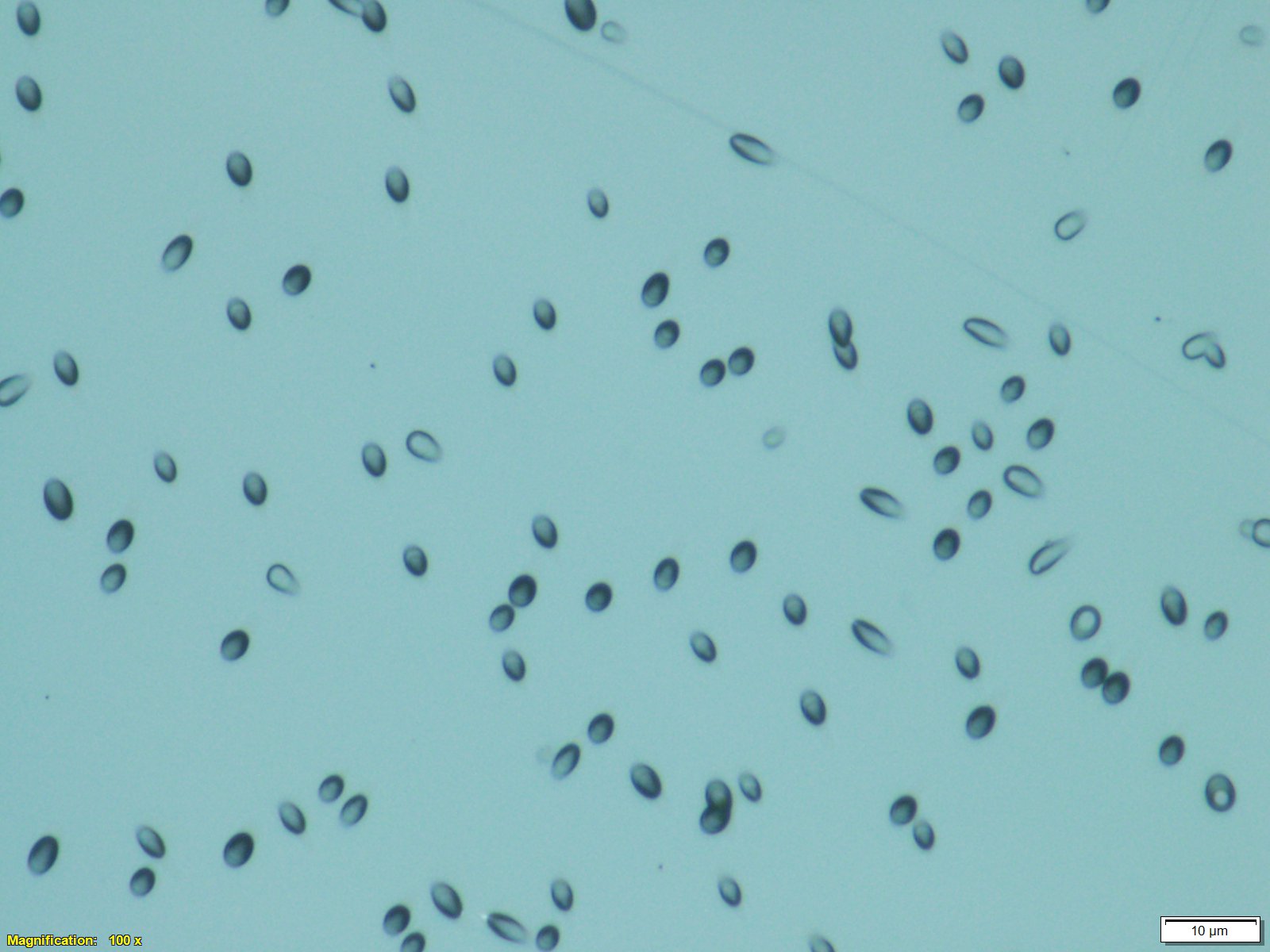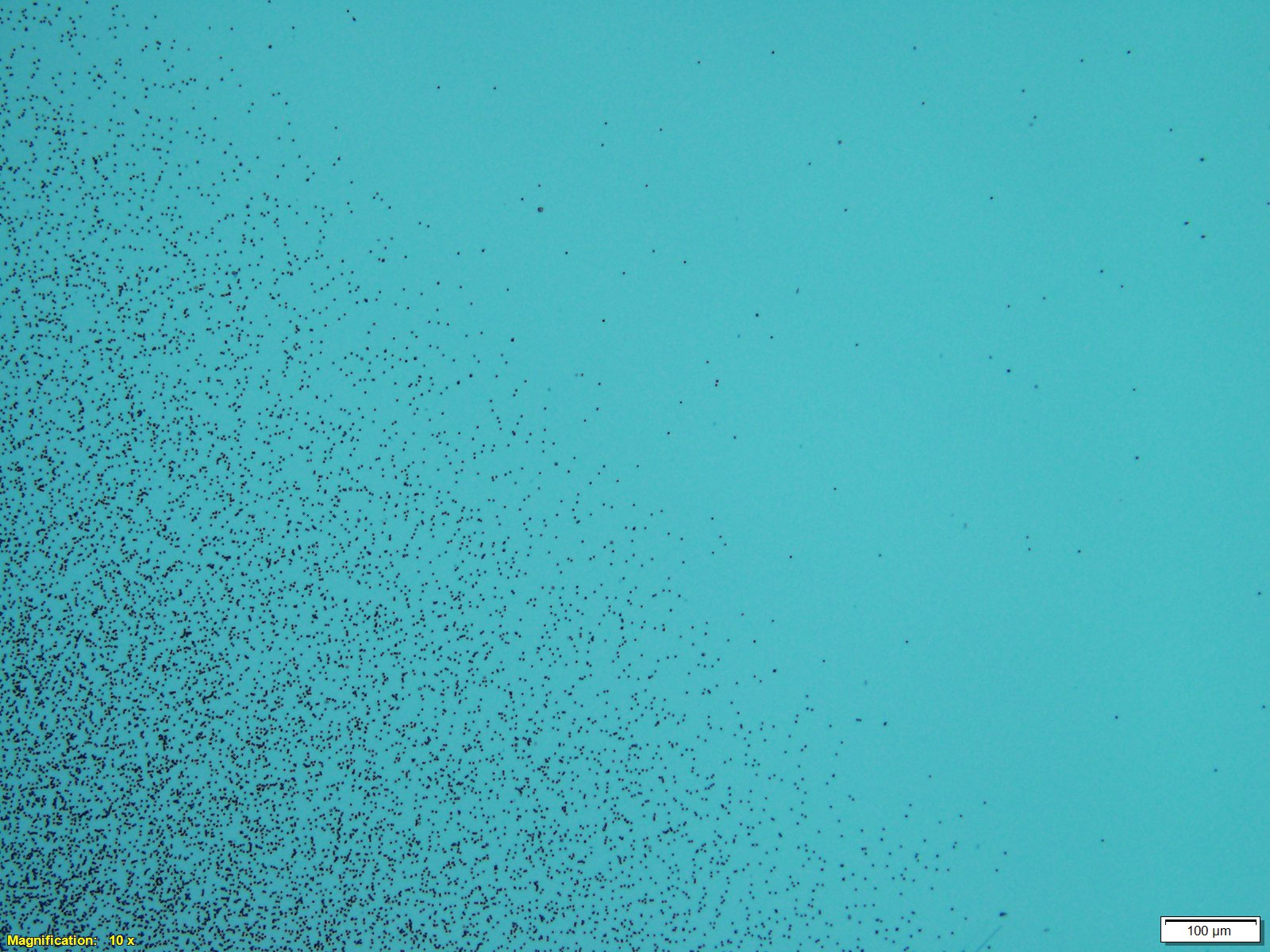CR-39 Recommended Best Practice
All CR-39 squares should be stored well away from radiation sources in a cool-dry environment, and temperatures not to exceed 86°F (30°C).
CR-39 may be used to measure the particle tracks and accumulated radiation exposure history from alpha particles, other charged particles of adequate mass, and from the recoil of protons in the CR-39 that are struck by energetic neutrons. In addition, for the detection of thermal neutrons, a thin boron layer coating may be requested on one side of the CR-39 to produce charged lithium-7 and alpha particles when the boron captures the thermal neutron. The comparison of the boron-coated side of the CR-39 to its opposite bare side provides an accurate estimate of the thermal neutron flux in most radiation measurement environments.
CR-39 squares are delivered in a hermetically-sealed thin plastic package with a secondary protective film on both sides that will block all alpha particles, and that will keep all alpha emitting gasses from accessing the CR-39. We recommend that you apply two squares to each measurement. Keep one sealed as delivered in close-proximity (the control square) to the square that you strip out of its hermetic seal to use to make your measurements (the experimental square). Once your measurement are complete, place both the control and the experimental square into the pouch provided, and ship both back to BSI for processing and analysis. Only the experimental square will detect alpha particles (and possibly other charged particles) from your experiment, while the control will detect the energetic neutron flux from your experiment (if any), and possibly the high-energy neutrons generated by solar geomagnetic storms and other sources of neutron radiation from the environment surrounding your apparatus. It will also detect neutrons from these environmental sources during shipping from / to your site, and while in storage.
If you plan to detect fusion neutrons from DT reactions, or neutrons from any other source that are expected to exceed 8 MeV in kinetic energy, then we encourage you request a more advanced analysis that will image and count tracks at the surface to detect alpha particles and epithermal neutrons as usual, followed by a deep etch (to at least 300 microns below the surface) to detect ‘triple-track’ alpha particles that are produced by these high energy neutrons as they disintegrate carbon atoms in the CR-39. These deep interactions are produced only by highly energetic neutrons, and they occur with equal probability throughout the bulk of the CR-39 squares. We recommend that you contact BSI for a brief consultation to assure that we prepare and analyze your CR-39 squares in the most appropriate way to accurately support your planned measurement protocols.
5.5 MeV alpha particles striking the CR-39 from various angles.
5.5 MeV alpha particles with energies moderated by passing through aerogel.
Alpha particles striking CR-39 through a large aperture.
Overexposure of CR-39 to alpha particles.





